

10 Writing Prompts from Norse Mythology
Here we are again looking to ancient mythology to inspire stories. If you are into this sort of thing, I have two other posts you might like about Greek Myths, Irish Myths , and Bulgarian Folklore .
This one was fun to do. Norse mythology is popular right now thanks to Neil Gaiman’s Norse Mythology and the new God of War game. For a more thorough reading of the stories I encourage you to check out Gaiman’s book. He is a wonderful storyteller. For my purposes I used Norse-Mythology.org . They have good, concise retellings that are often followed by scholarly commentary.
Below I have summed up ten myths and then given you prompts to follow to create your own stories using the themes from the original.
1) The Creation of Thor’s Hammer
Loki, being his mischievous self, cut of the hair of Thor’s wife Sif. When Thor found out, he was furious and threatened Loki, who begged for mercy and said he would get her new, better hair. Thor allowed this. Loki went down to Svartalfheim, home of the dwarves, to get Sif new hair.
He first went to the sons of Ivaldi who made him Sif’s new hair, Skidbaldnir (a ship that always has favorable winds and can fold up and fit in one’s pocket), and Gungnir (the best spear).
But Loki wasn’t satisfied, he hadn’t caused any trouble. So he went to the brothers Brokkr and Sindri and asked them to make gifts that were even better. He said if they did, they could have his head. They agreed. In order to win the bet, Loki took the shape of a fly and bit one of them each time they made an item. They made Gullinbursti (a live boar with golden hair “who gave off light in the dark and could run better than any horse”), Draupnir (a ring from which “every ninth night, fell nine new golden rings of equal weight), and finally Mjollnir (a hammer which never missed and returned to its owner). The only gift that was flawed was the hammer, which had a short handle.
Loki took all the gifts and returned to Asgard where he distributed them among Thor, Sif, Odin and Freyr. Despite how impressed they all were, they told Loki he owed the dwarves his head. He claimed they could only have his head and not his neck so it would be impossible. The dwarves settled for sewing his mouth shut.
Writing Prompt
Write a story where your main character must replace a magical item. Perhaps they stole the original and perhaps they were framed. What adventures could they have in trying to obtain the replacement?
2) Thor’s Womanly Disguise
Thor rose one morning to find his beloved hammer missing. After traveling to Jotunheim, land of the giants, Loki learned that Thrym, chief of the giants, had stolen it and would not return it unless Freya married him. This made all the gods angry and they devised a plan.
Thor would disguise himself as Freya and go to meet Thrym. Thor was not happy with this solution which he saw as being humiliating. But the others convinced him there was no other way. Loki went as his hand-maid.
When they arrived, Thor almost gave himself away by eating all the food available. When Thrym got suspicious, Loki told him Freya had been so lovesick she hadn’t eaten in weeks. Then Thrym lifted the veil to kiss his bride. “Thor’s eyes glared at him so intently that they seemed to burn holes right through him.” This time Loki told Thrym she had also been unable to sleep for weeks. He accepted these explanations and the ceremony was begun.
When Mjollnir was retrieved from its hiding place and laid in Thor’s lap as part of the proceedings, he took hold of it and slaughtered all the giants. He then, gratefully, changed his clothes.
This is a fun tale of disguises and tricks. I can imagine Loki doubled over laughing the whole time. Write a story where someone must don a disguise s/he finds distasteful. Have a secondary character around who enjoys every minute. Does the main character learn any lessons by the end?
3) The Kidnapping of Idun
One day Odin, Loki and Hoenir were traveling through the mountains and they stopped to eat an ox. But the ox wouldn’t cook over their fire. Finally, they noticed an eagle who told them he was keeping it from cooking. He would let the fire do its job if they let him eat from the ox first. They agreed but the eagle took the best parts and Loki charged in anger.
The eagle took hold of Loki’s weaponized branch and flew high above the mountains. Loki was so scared he would do anything. The eagle was actually Thjazi, a giant in disguise, and he wanted Idun and her fruit that kept the gods young. Loki agreed.
When the gods returned to Asgard, Loki found Idun and convinced her to follow him out of Asgard. He said he found fruits even better than hers and she should come see them and bring her own for comparison. When they were away, the eagle came and took her back to the mountains.
When she was gone, the gods began aging. They panicked and got angry when they found out what Loki had done. They demanded he go and bring Idun back. He flew to the mountains as an hawk and found Idun alone, Thjazi off fishing. He turned her into a nut so he could carry her in a talon and took off.
Before he had gotten far, however, Thjazi returned, found Idun missing, and began the chase. The eagle was quickly gaining on Loki and both he and the other gods were worried the hawk wouldn’t make it. They made a giant pile of wood around Asgard and when Loki crossed it, they lit it on fire, killing Thjazi in the explosion. Idun was safely returned.
There are a great many stories of goddesses being kidnapped and bargained for. Sometimes they escape and sometimes they don’t but they often have very little choice in the matter themselves.
Write a story where the kidnapped goddess/woman rescues herself, or is rescued by other women. Perhaps the men keep failing so the women take it into their own hands. Perhaps she wants to escape the “valiant knights” coming to her rescue as much as the evil-doer who kidnapped her in the first place.
4) The Marriage of Njord and Skadi
After the death of Thjazi, his daughter, the giantess Skadi, came to Asgard for vengeance. The gods managed to convince her to accept reparations instead.
First Odin took Thjazi’s eyes and cast them into the sky, turning them into stars. Next they were supposed to make her laugh. None were able until Loki played tug of war with a goat by tying his end of the rope to his testicles. Finally, she was allowed to choose one of the gods to marry, but she could only look at his legs and feet. Hoping to choose Baldur, she actually chose Njord.
After the wedding, they had to choose whose home to live in. Njord lived on the beach, being a sea god, and Skadi lived up in the cold mountains. They lived on the mountain for nine months and then went down to live in Njord’s home. Each hated the home of the other, being such opposites. Njord hated the sound of wolves and the unceasing cold. Skadi hated the constant call of seabirds. They decided they were too different to make it work and parted ways.
After all the times a man won a woman as a prize, a woman warrior decides to do the same. But she soon learns that winning your spouse is not all its cracked up to be.
5) The Binding of Fenrir
Loki had three children with the giantess Angrboda, Jormungand, Hel, and Fenrir, a great wolf. All three had terrible implications for the gods and the coming of Ragnarok. The gods force Jormungand and Hel into the ocean and underworld respectively, but decided to keep Fenrir in Asgard. Tyr, the god of law and honor, was the only one brave enough to feed and tend Fenrir.
When it became clear that Fenrir would grow too large to remain in Asgard, they decided to chain him and stash him away somewhere. They tricked Fenrir into letting them place all manner of chains on him by saying it was a test of his strength. They even cheered every time he broke free.
Finally, they sent to Svartalfheim, the realm of dwarves, and asked them to make a chain that would hold the wolf. They managed the feat: “it was wrought from the sound of a cat’s footsteps, the beard of a woman, the roots of mountains, the breath of a fish, and the spittle of a bird – in other words, things which don’t exist, and against which it’s therefore futile to struggle. Gleipnir (“Open”) was its name.”
Seeing this fancy new chain, Fenrir suspected a trap. He said he would only let them put it on him if one of them was willing to place his or her hand in his mouth as collateral, so to speak. All refused except Tyr. When the chain went on and Fenrir was unable to break free, he bit off Tyr’s hand.
The gods then moved the wolf out of the way and chained him to a boulder and placed a sword in his mouth to keep it open. The drool pouring from his mouth formed the river Van, or Expectation. He waited there until Ragnarok.
Write a story where the characters must deal with a force/person/beast/object that they know will eventually be their demise. They want to put it off and they know any solution will only be temporary. What lengths are they willing to go to in order to by some time?
6) Origin of the Cosmos
For this I will quote norse-mythology.org directly. They did a wonderful job of compiling the account and follow it up with some great commentary that I encourage you to read.
Before there was soil, or sky, or any green thing, there was only the gaping abyss of Ginnungagap. This chaos of perfect silence and darkness lay between the homeland of elemental fire, Muspelheim, and the homeland of elemental ice, Niflheim. Frost from Niflheim and billowing flames from Muspelheim crept toward each other until they met in Ginnungagap. Amid the hissing and sputtering, the fire melted the ice, and the drops formed themselves into Ymir, the first of the godlike giants. Ymir was a hermaphrodite and could reproduce asexually; when he sweated, more giants were born. As the frost continued to melt, a cow, Audhumbla, emerged from it. She nourished Ymir with her milk, and she, in turn, was nourished by salt-licks in the ice. Her licks slowly uncovered Buri, the first of the Aesir tribe of gods. Buri had a son named Bor, who married Bestla, the daughter of the giant Bolthorn. The half-god, half-giant children of Bor and Bestla were Odin, who became the chief of the Aesir gods, and his two brothers, Vili and Ve. Odin and his brothers slew Ymir and set about constructing the world from his corpse. They fashioned the oceans from his blood, the soil from his skin and muscles, vegetation from his hair, clouds from his brains, and the sky from his skull. Four dwarves, corresponding to the four cardinal points, held Ymir’s skull aloft above the earth. The gods eventually formed the first man and woman, Ask and Embla, from two tree trunks, and built a fence around their dwelling-place, Midgard, to protect them from the giants.
There is much in this tale that could be used as story inspiration. The rise of Odin, the son of the first gods, his killing (was it betrayal, murder?) of Ymir. The fact that, in order for a wold suitable for humans to live on, the first living being had to be slain, is a very compelling idea.
Try writing a story about a scholar uncovering the truth of their creation. One religion sets up the Odin-figure to be a hero and Ymir to be the evil he had to vanquish. Another calls Odin the villain who slew the peaceful Ymir. The scholar does some investigating to discover that they worked together in order to create a place safe for humans to live. What would be the religious, political, social, and other ramifications of such a discovery?
7) The Fortification of Asgard
One day a giant who was a smith arrived in Asgard. He offered to build a wall around the place that would protect it from anything. He told the gods he could build it in three winters and that his price was Freya, the sun, and the moon. The gods really wanted that wall but they didn’t want to lose Freya, the sun, and the moon. They had a debate and Loki told them they should agree to the giant’s payment but make him do it in one winter and with no help other than his horse. They decided this was brilliant as the giant could never finish it on time but they would still get a good portion of wall. The giant agreed as long as they guaranteed his safety during his stay in Asgard.
As the winter progressed so did the wall. The gods watched the giant and his horse, Svadilfari, make quick work of the project. They also noted that the horse did twice as much work, carrying the stones and equipment around. When there were only three days left, it was clear that the wall would be completed on time. The gods panicked. They didn’t want to lose Freya, the sun, and the moon but they couldn’t see a way out. They caught Loki and berated him for giving them this advice. They demanded he fix it.
So, when the smith and his horse went out into the woods to collect stones, Loki disguised himself as a mare. Svadilfari saw the mare and was immediately distracted. He took off and chased mare Loki. When the horse didn’t return, the giant knew he had lost his commission. He reported to Asgard. The gods decided that his payment would be death and Thor’s hammer “shattered his head into pieces no bigger than breadcrumbs.”
Loki mare, meanwhile gave birth to an eight-legged horse named Sleipnir. Odin rose this horse throughout the nine realms.
This story has quite a few interesting qualities: the mysterious stranger who offers a valuable service in exchange for an impossible price (why was a giant offering to help the gods anyway?), an oath made by gods but very soon regretted, the questionable choices made by said gods regarding said oath, a male god turning into a female horse to distract a male horse, the same god allowing him/herself to be caught in order to bear a child, the practical murder of the giant who did build them most of a fantastic wall. Wow. Where to start. The male-female thing is a can of worms I don’t think I have the time for right now so I’ll go with the oath angle.
I like the idea of the giant walking into the stronghold of his enemy and offering them his services, no matter how high the price. Or perhaps he was hoping they would negotiate. The commentator at norse-mythology.org ( https://norse-mythology.org/tales/the-fortification-of-asgard/ ) points out that without the wall Ragnarok is not far away, so he is helping them put off the end of their reign. What could have motivated him to do that, to help the enemy of the giants in this way?
So, create two civilizations who are so opposed that this act seems nearly impossible. What price does your stranger demand? What is the compromise? Does he see the betrayal coming and can he avoid it?
8) The Aesir-Vanir War
There were actually two tribes of Norse gods, the Aesir and the Vanir. The former included Odin and Thor and the latter included Freya, Freyr and Njord. Sources are a little vague on the differences and at times there seems to be no distinction. But they did have a war.
The war was started when the Aesir noticed Freya and her magic. She practiced seidr, “a form of magic principally concerned with discerning and altering the course of destiny.” The Aesir gods became so consumed with using her magic that they began to neglect their other duties like “honor, kin loyalty, and obedience to law.” Instead of owing up, they blamed Freya and tried to kill her three times. All three times she was reborn from the ashes.
After this incident the two tribes hated each other and the war began. The Aesir fought with weapons and force and the Vanir fought with magic. They were evenly matched and the war lasted a very long time. Eventually both sides tired of fighting and decided to make a truce.
As was the custom, they agreed to a hostage exchange. Freya, Freyr, and Njord went to live in Asgard and Hoenir and Mimir went to live with the Vanir. Freya and company lived happily enough but Hoenir and Mimir met with trouble from the Vanir. Hoenir would dispense wonderful advice but only when his brother was there. After a misunderstanding (and rather harsh reaction) they beheaded Mimir and the advice was gone. But Odin took Mimir’s head and enchanted it so that it would keep giving him advice when he needed it.
Rather than renew hostilities the two sides decided to let this misunderstanding go and they sealed their truce. They all spit into a cauldron. From the spit was born Kvasir, the wisest of all gods.
Write a story from the hostages point of view. Imagine a war between two opposing societies. Play up the differences or use their similarity as part of the plot. Follow the lives of the two groups of hostages as they are forced to live out their lives with their new hosts. Do any of them fit in? Are any mistreated? How do the others react? How do their families back home react? Are your societies as forgiving as the Norse gods in this example were?
9) The Mead of Poetry
After the Aesir-Vanir war the gods came together to create Kvasir, the wisest being. He went around sharing his wisdom and solving people’s problems. But not everyone was as kind and he soon met a terrible end.
Two dwarves, Fjalar and Galar, invited Kvasir to their home and when he arrived they murdered him and brewed his blood into mead. This mead granted anyone who drank it great wisdom and s/he would become a scholar or poet.
The dwarves were, apparently, fond of murdering people and after slaying a giant and his wife, they had to face the giant’s angry son, Suttung. They begged for their lives and the giant agreed on the condition that they give him the mead. They agreed. The giant then hid the mead under a mountain and bade his daughter, Gunnold, watch over it.
Odin did not want the mead wasting away under some mountain so decided to get it for himself. In disguise, he went down to the farm of Baugi, Suttung’s brother. There, he tricked Baugi’s farmhands into murdering each other. He then told Baugi he would do the work of all nine men if Baugi would help him get a sip of the mead. Baugi agreed, not thinking one man could do the work of nine.
When Baugi took Odin to Suttung and asked for the mead, Suttung, predictably, refused. Odin then made Baugi help him sneak in. He gave Baugi an auger and made him drill a hole into the underground chamber. Baugi tried tricking Odin but failed. When the hole was done, Odin changed into a snake and slid through. Baugi tried to kill him with the auger but missed.
Once inside, Odin met Gunnold. He made a deal with her. He would sleep with her for three nights if she would grant him three sips of the mead. She agreed (perhaps she shouldn’t have been locked up in the basement of a mountain for so long) and after the third night Odin took one gulp from each of the three casks, downing the whole thing. Then he turned into an eagle and flew off.
Suttung found out what happened and turned into an eagle to give chase. Suttung wasn’t fast enough though and Odin beat him to Asgard. The other gods had put out some containers and Odin spit up the mead into them. Some drops fell down to earth in the process, the source of all bad poetry and scholarship. Odin then dispensed the mead to those he thought worthy.
First, I love that this story starts and ends with spit. Ah, the Norse. Anyway, I think this myth inspires a good heist story. You could give Odin a team or just follow a single man or woman’s efforts. You could make things more interesting by adding other contestants for the prize.
Are they still trying to get to the bottom of a mountain? That seems like a good place to hide something so precious. But what other dangers are in store? Is the giant’s daughter all that she seems? Are there other creatures or traps awaiting the main character? And is s/he a hero or an antihero?
10) How Odin Lost his Eye
Odin, as you can tell from the previous myth, coveted knowledge and wisdom. He did a great many incredible things in order to obtain it. (I recommend you check out the myth of how he discovered runes .) On this occasion he found the Well of Urd, the well at the base of Yggdrasil, the world-tree.
Upon discovering the well, he wanted to drink from it. Mimir, who we have met and know to be extremely wise, was the guardian of the well. He wanted to make sure Odin wasn’t granted this blessing easily. He demanded that Odin pay for his drink with an eye. “Odin – whether straightaway or after anguished deliberation, we can only wonder – gouged out one of his eyes and dropped it into the well.” He was then allowed to drink from the well.
This myth is simple in its delivery, but complex in meaning. It is about sacrifice. Did Odin need to deliberate or should Mimir have raised the price? Write a story about sacrifice. Does your character want something for him/herself or for a loved one or for society? What is s/he asked to sacrifice and how willing is s/he to comply? In the end, is the sacrifice worth the reward?
Once again, I hope these myths inspired you to write many wonderful stories of your own. Let me know in the comments if you got any different writing ideas from any of these myths.
Photo credit: SarahDarkmagic on VisualHunt / CC BY-SA
Share this:

You May Also Like

15 Writing Prompts from Lovecraft

10 Writing Prompts from Hans Christian Andersen

10 Writing Prompts from Bulgarian Folklore
Leave a reply cancel reply.
Your email address will not be published. Required fields are marked *
Notify me of follow-up comments by email.
Notify me of new posts by email.

In order to continue enjoying our site, we ask that you confirm your identity as a human. Thank you very much for your cooperation.

- Vili and Ve
- Fjorgynn and Fjorgyn
- Aegir and Ran
- Skoll and Hati
- Land Spirits
- Ask and Embla
- Huginn and Muninn
- Geri and Freki
- Berserkers and Other Shamanic Warriors
- The Einherjar
- Jörmungandr (Midgard Serpent or World Serpent)
- Tanngrisnir and Tanngnjóstr
- Gullinbursti
- Mjölnir (Thor’s Hammer)
- Aegishjalmur (Helm of Awe)
- Gjallarhorn
- Gungnir (Odin’s Spear)
- Skidbladnir
- Brísingamen Necklace
- Horn Triskelion (The Horns of Odin)
- Nidavellir (Svartalfheim)
- Hel (The Underworld)
- Yggdrasil (World Tree)
- Ginnungagap
- Járngreipr (Járnglófar)
- Viking Runes Meanings
- Viking Symbols And Their Meaning
- Viking Tattoos
- Viking Food and Drinks
- Viking Clothing and Jewelry
- Viking Raids and Warfare
- Viking Weapons and Armor
- Viking Trade and Commerce
- Viking Ships
- Viking Politics
- Viking Heritage
- Write for Us
- Search for:
No products in the cart.
Return to shop
Join us as on Patreon and be part of our Viking community. Plus, you can gain premium exposure opportunities, including featuring your company logo and link on our homepage footer or sidebar placement on every page.
- BECOME A PATRON
Bringing Norse Myths To Life: Writing An Engaging Essay
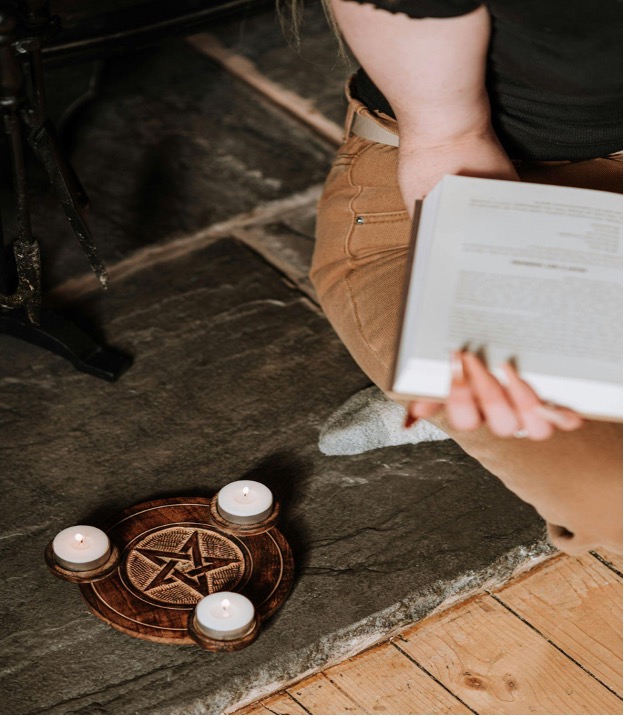
Only a few particular aspects of human mythology are comparable to the complexity and intrigue of Norse myths. Ranging from the thunderous clashes of the gods to the inspiring narratives of their great deeds, the sagas of Norse mythology have captivated the audience for many years. Yet what’s in our power as writers and enthusiasts, precisely, which will serve the new lifeblood to the old narratives under the restriction of an essay? So, take part in this venture and discover together the methods we use to turn mundane essays into something truly amazing, something that dives deep into Norse mythology.
Understanding Norse mythology
Full Scottish folklore, or the old sacred rituals of the Scandinavian Germans, manifests in its most spectacular form with the cycle of fanciful stories and mysterious characters of Norse mythology. Their essence is the exploits of the gods, Odin, Thor , and Loki, whose epic battles engage all realms and challenge the universal preconception. However, characters are less important in Norse mythology, as it’s a story about inevitable fate, honor, and the constant struggle between disorder and order as well. In case you’re interested in exploring and understanding this section of Norse mythology and the rest better, you can seek online assistance from a renowned coursework writing service . They boast well-established experts with a vast knowledge of the topic in detail.
Exploring the mysterious layers of Norse mythology, you get a sense of a vivid world filled with symbols and ideas that carry a lot of meaning. Across all the realms of this world, from the mighty Yggdrasil, the source of life and sustenance, to the recurrent stories of Ragnarök, the looming doom foreshadowed in prophecy, there are two aspects of myths that continue to be true and that remain uncanny: the myths with their ever-repeating themes and the mysteries that are neither. Additionally, Norse mythology was not only a source of superstitions but also a thing of art, culture, and literature. Many civilizations have captivated the notions of the gods and sagas that drew inspiration from the mythology of the Norsemen.
Crafting the essay
Effective writing about the Norse myths involves choosing and crafting an appropriate text and covering it with the main headings and subheadings. As aspiring mythographers, we must make it our responsibility to go on an exploration journey, both in terms of the most interesting stories and continuing to search and quest for more information. While we’re on this huge ocean of tales to pick valuable artifacts that will fit our readers’ romantic preferences, we need to find those treasures that captivate the reader’s imagination.
Mythology is the first area in which we’ll need to exercise the utmost caution and pick the right subject. While many people may know the deeds of gods like Thor, Odin and so on, this is just the tip of the iceberg as Norse mythology contains a true wealth of “minor events” whose stories are worth studying. A good illustration for this can be either recounting the sad story of Baldr and Nanna or revealing the mystery of the creation myth from Norse mythology. However, the selection must be done based on the extent of depth and relevance.
Once we’ve picked the legend or myth of our work through deep research and analysis, the research is now over and it’s time to start arranging the article with a focus on why the topic we chose is important and its consequences. Our essay should be steady yet pliant, directing the reader on a journey through the twisting worlds of Norse fables. In the introduction, we distill the story and introduce the myth we wish to discuss, which will give the reader a clear context for the rest of the essay, as well as the main thesis statement. Once we set the scene, we go on to examine the different aspects of the myth and interpretations in the body paragraphs. The conclusion compacts and summarizes the main points to reflect the broader significance.
Engaging the reader
Get ready to be immersed in a universe where divine beings dwell among humans, where giants and demons emerge from the dark, and where the whole universe exists to be unraveled. One of the strongest tools we can use is the combination of literary language and imagery. With a description that captures the spirit of the mythological world, we can take the readers on a journey of awe-inspiring natural beauty, icy winds, and rarefied sounds and sensations. Either by using the icy peaks of Jotunheim or the fiery hall of Valhalla as an example, it’s essential not only that the action must leap from the page but also that the entire reading experience be compelling enough to allow the reader to reach the impossible and have it become a reality.
However, creating a captivating atmosphere is not the only responsibility of an author; it necessitates the art of narration. We must create a narrative compelling enough to touch the reader’s hearts and souls and also involve them in the mystery and the excitement of Norse mythology. So, we can employ the use of surprise, terror, and complication to keep our audience overwhelmed. By engaging our audience in internalizing these fundamental notions and their relationship to their own existence, we’ll become closer to the essence of mythology and thus its heritage that encompassed our mentality for hundreds of years.
Writing style and tone
In essay writing, the composer’s tool of a mythographer is mainly style and tone. Wielded properly, they captivate and inspire the hearts and minds of readers. Finding the right note on which to walk the line between academic rigor and intelligibility is a must. You’ll make your readers understand and be captivated from the moment they start till they finish your composition. It can be pretty simple to follow an impulse to take up a very dry and academic tone, but we must resist this temptation to burrow into jargon and technicalities. Instead, we need to infuse our writings with very much character and passion, allowing our love of the topic to spark the attention of the reader word by word.
Equally, clarity and orderliness are key. Instead of having a series of independent paragraphs seemingly unrelated, the topic sentence of each paragraph must logically lead from one to the next in order to give the reader the kind of guided tour where the journey is both logical and intuitive. Through adopting a concise, straightforward writing style, we, as writers and enthusiasts, will successfully deliver the message without unclear thoughts.
Unveiling the essence of Norse mythology
The accounts of the Norse gods and heroes have provided us with bright beacons of light as to how to truly live from the majestic halls of Asgard to the dark depths of Hel , bringing fantasy to life. So, we as writers and enthusiasts have the responsibility to explore the vast ocean of Norse mythology to realize the countless tales that are yet to be discovered. Thus, let us get down to it all, and proceed to convey these epics to the new generations in the future through effective and engaging essay writing.
Username or email address *
Password *
Remember me Log in
Lost your password?

- study guides
- lesson plans
- homework help
Norse Mythology (Stories) Essay Topics & Writing Assignments
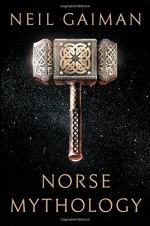
Essay Topic 1
Discuss the narrative style of Neil Gaiman's Norse Mythology. Are the stories each related from the same narrative perspective? Are the stories related in past, present or future tense? Why are these choices significant?
Essay Topic 2
Describe and analyze Odin in the stories of Norse Mythology. What are the main characteristics that Odin exhibits? What are his actions in the stories? What motivates Odin? Does Odin have a tragic flaw?
Essay Topic 3
Describe and analyze Loki in the stories of Norse Mythology. Who are Loki's parents? Does he have siblings? Who are his children? What powers does Loki possess? Is he a flawed character?
Essay Topic 4
Describe and analyze the god Thor in Neil Gaiman's Norse Mythology. What are Thor's powers? How would you describe his personality? What motivates Thor's actions in the stories?
Essay Topic 5
Define irony and cite examples of irony in the stories...
(read more Essay Topics)
| (approx. 3 pages at 300 words per page) |

FOLLOW BOOKRAGS:
- Literature Notes
- About Norse Mythology
- About Mythology
- About Egyptian Mythology
- Summary and Analysis: Egyptian Mythology
- The Creation
- About Babylonian Mythology
- Summary and Analysis: Babylonian Mythology
- The Creation, the Flood, and Gilgamesh
- About Indian Mythology
- Summary and Analysis: Indian Mythology
- Indra and the Dragon
- Bhrigu and the Three Gods
- Rama and Sita and Buddha
- About Greek Mythology
- Summary and Analysis: Greek Mythology
- The Beginnings — Creation
- The Beginnings — Prometheus and Man, and The Five Ages of Man and the Flood
- The Beginnings — Loves of Zeus
- The Beginnings — Poseidon, Athena, Apollo, Artemis, Aphrodite, Hermes, Demeter, and Dionysus
- The Heroes — Perseus, Bellerophon, and Heracles
- The Heroes — Jason and Theseus
- The Heroes — Meleager and Orpheus
- The Tragic Dynasties — Crete: The House Of Minos
- The Tragic Dynasties — Mycenae: The House Of Atreus
- The Tragic Dynasties — Thebes: The House of Cadmus
- The Tragic Dynasties — Athens: The House of Erichthonius
- The Trojan War — The Preliminaries, The Course of the War, The Fall of Troy, and The Returns
- The Trojan War — Odysseus' Adventures
- Other Myths
- About Roman Mythology
- Summary and Analysis: Roman Mythology
- Patriotic Legends — Aeneas and Romulus and Remus
- Love Tales — Pyramus and Thisbe, Baucis and Philemon, Pygmalion, Vertumnus and Pomona, Hero and Leander, Cupid and Psyche
- Summary and Analysis: Norse Mythology
- The Norse Gods — Odin, Thor, Balder, Frey, Freya, and Loki
- Beowulf, The Volsungs, and Sigurd
- About Arthurian Legends
- Summary and Analysis: Arthurian Legends
- Merlin, King Arthur, Gawain, Launcelot, Geraint, Tristram, Percivale, the Grail Quest, and the Passing of Arthur's Realm
- Critical Essays
- A Brief Look at Mythology
- Essay Questions
- Cite this Literature Note
Introduction
Teutonic religion extended through Germany, Scandinavia, and England in the Dark Ages, and as Christianity supplanted it the old gods and rites were destroyed and forgotten. Much of our knowledge of this religion stems from The Elder Edda and The Younger Edda, which were compiled in Iceland during the Middle Ages. The Eddas project a stern and gloomy view of the cosmos and of man's role in it.
The world was created when Odin and his brothers slew the primeval Frost-Giant Ymir, and it will come to an end when the Giants rise against Odin and his comrades and kill them in battle. Certain doom awaits the gods and men alike, but in the face of that doom the one noble activity is war, and to die courageously fighting was the only way to enter Valhalla, the warrior's paradise. Love in the Norse tales was often accompanied by murderous passions, and treachery was commonplace. The world here is a hard, cold, bitter place in which to live.
Despite the starkness of this picture the Norsemen took intense pleasure from such things as friendship, drinking and eating, making love, outwitting strangers, avenging wrongs, and fighting bravely. They were a fierce, hard-headed race, and their myths take no pains to conceal it.
We will examine the creation and destruction of the universe, some tales of the gods, and the epic stories of Beowulf, the Volsungs, and Sigurd. These will give a more vivid and detailed version of how the Norsemen saw the world and what they valued.
Supernatural Races in Norse Myth
The Aesir were the primary race of gods, which included Odin, Thor, Tyr, Balder, and Heimdall, among others. They lived in Asgard and held temporary power over the cosmos. Aging like mortals, these gods renewed their youth by eating magic apples. Their reign would end and they would die at Ragnarok, when evil overcomes good in a final battle.
The Vanir were a secondary race of gods, not essentially different from the Aesir. In ancient times the Vanir and the Aesir battled one another until a compromise was reached in which the Vanir were admitted into Asgard. Among these gods were Frey and his beautiful sister Freya.
The Giants , whether Frost-Giants or Mountain-Giants, were terrible magicians who lived at Jötunheim, engaged in contests with the gods, and would shatter the cosmos at Ragnarok.
The Dwarves were a subterranean race of craftsmen.
The Valkyries , "choosers of the slain," were female warriors who selected brave mortal fighters who died in battle to live in Valhalla in Asgard. Attendants of Odin, the Valkyries were also immortal waitresses that refilled the drinking cups in Valhalla. They were visible only to men about to die fighting.
The Major Norse Gods
Odin (Woden, Wotan) was the chief god, a master of wisdom, magic, and poetry. A protector of courageous noblemen in war, he was also the god of the slain. Odin was blind in one eye, wore a golden breastplate and helmet, carried a magic spear, and rode an incredibly swift, eight-legged horse named Sleipnir. On his shoulders perched two ravens, Hugin and Munin (thought and memory), that flew throughout the world and reported everything to him each night.
Frigga was Odin's wife, who was also wise. She protected brave warriors whom Odin neglected. Both Frigga and Odin had extramarital sexual encounters.
Thor was the god of thunder, a powerful deity, upright in character but fearsome to his enemies. He protected peasant warriors and possessed a belt that doubled his strength, iron gloves, and a magic hammer, Mjölnir, which always struck its target and returned to Thor's hand.
Balder , the son of Odin and Frigga, was especially favored and loved by nearly every being in the world, but he was the first god to die, killed by Loki's treachery.
Tyr presided over public assemblies, legal matters, and battles. His hand was bitten off by Fenrir the wolf, a monstrous enemy of the gods.
Frey was the god of vegetation and fertility.
Freya , his sister, was the goddess of love and beauty.
Heimdall was the watchman of the gods, stationed on the rainbow bridge, Bifrost, that led to Asgard. His trumpet would announce doomsday.
Loki , although allowed in Asgard, was the son of a Giant. Full of malice and cunning, he perpetrated much mischief until the gods bound him in a cavern with a venomous serpent to torment him. He fathered three mighty monsters, including Fenrir the wolf and the Midgard Serpent.
Hel was goddess of the netherworld, and half her face had human features while the other half was blank. She ruled the dead.
Creation and Catastrophe
At first there was only a great void. But to the North of this void there formed a region of mist and ice, while to the South grew a region of fire. Niflheim was the name of the North, and Muspellsheim of the South; and the heat from the latter melted some of the ice of the former, which shaped Ymir, the Frost-Giant with a human form. From Ymir's sweat came the race of Giants, and as the glacial ice melted further a huge cow was created to feed the Giants. This cow in turn was fed by salt contained in the ice. One day it licked the ice and hair emerged, on the next day a head, and on the third day Bur emerged, fully formed. Bur had a son, Buri, who had three sons — Odin, Vili, and Ve. These three were a new race, not Giants but gods. They banded together and murdered Ymir. Most of the other Giants drowned in Ymir's blood, which created a great sea. From Ymir's body the three gods made solid land, the earth, and from Ymir's skull they made the vault of the heavens. Odin and his brothers then created the race of dwarves from the maggots in Ymir's body. Other gods joined these three, and together they erected Asgard and all its halls to be their own home.
Having established their supremacy, the gods made the first mortals, shaping a man from an ash tree and a woman from a vine. The gods bestowed breath, energy, a soul, reason, warmth, and freshness on this first couple. And from their male descendants Odin chose only the bravest to live in Asgard after they died, for these warriors would aid him in the final showdown with the forces of evil.
The cosmos was supported by a tremendous ash tree, Yggdrasil. One of its roots extended to Niflheim, which was the netherworid; another to Jötunheim, the dwelling place of Giants; another to Midgard, the home of man; and one to Asgard, the home of the gods. In its upper branches lived a squirrel and an eagle, while at its rootage lived the serpent Nidhögg, which gnawed away, until at the end of time the whole structure would collapse. In the meantime the Norns, or Fates, watered the tree to keep it from dying.
Odin knew the power of the gods was not eternal, for he and his comrades would die when the Giants and demons rose against them. The last fight would take place at Vigrid, a field one hundred miles in length and breadth. Odin would be swallowed by Fenrir the wolf, but his son would avenge him. Thor and the Midgard Serpent would destroy each other; so would Loki and Heimdall; and Tyr would slay Garm, the fierce dog of Niflheim, and be clawed to death in turn. The stars and all heavenly bodies would plummet from the sky as the earth sank beneath the sea. The twilight of the gods would become night, and the universe would exist no more.
Yet there still existed a power, the Nameless One, that would give birth to a new world beyond the edge of time.
Previous Love Tales — Pyramus and Thisbe, Baucis and Philemon, Pygmalion, Vertumnus and Pomona, Hero and Leander, Cupid and Psyche
Next The Norse Gods — Odin, Thor, Balder, Frey, Freya, and Loki

- All Britannica Quizzes
- All M-W Quizzes
- Games & Quizzes
- History & Society
- Science & Tech
- Biographies
- Animals & Nature
- Geography & Travel
- Arts & Culture
- On This Day
- One Good Fact
- New Articles
- Lifestyles & Social Issues
- Philosophy & Religion
- Politics, Law & Government
- World History
- Health & Medicine
- Browse Biographies
- Birds, Reptiles & Other Vertebrates
- Bugs, Mollusks & Other Invertebrates
- Environment
- Fossils & Geologic Time
- Entertainment & Pop Culture
- Sports & Recreation
- Visual Arts
- Demystified
- Image Galleries
- Infographics
- Top Questions
- Britannica Kids
- Saving Earth
- Space Next 50
- Student Center
Norse Mythology Basics Quiz
Popular quizzes.

Norse Mythology (60 Questions)

Whether you're new to the myths or have been learning them your whole life, the Norse tales are both comedic and dark, thrilling and calm, romantic and disgusting, moving and utterly absurd. There's something for everyone.
In this quiz you'll answer 60 questions on the Norse realms, gods and stories. They'll range from easy, to hard, but try to put an answer down for each question. This quiz may take a while, so make sure you're comfortable!
Related Quizzes:
What is GotoQuiz? A fun site without pop-ups, no account needed, no app required, just quizzes that you can create and share with your friends. Have a look around and see what we're about.
Trending Quizzes
Special feature.
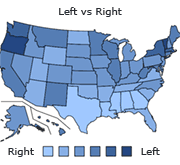
Try the top political quiz on GoToQuiz to find where you fall on on multiple axes, then compare your results to others'.
We're Testing
Send Feedback about GoToQuiz, report a bug or error, make a suggestion!
Norse Mythology
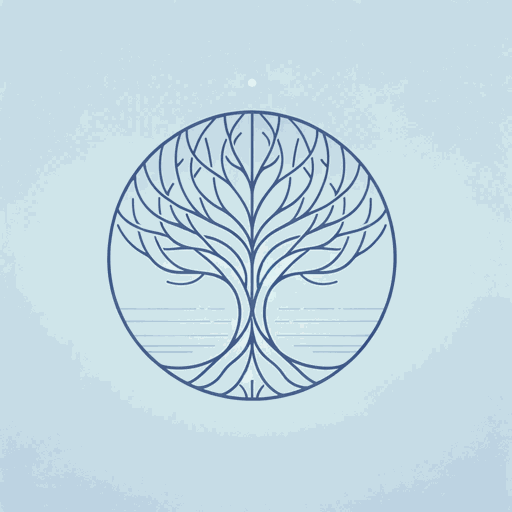
86 pages • 2 hours read
A modern alternative to SparkNotes and CliffsNotes, SuperSummary offers high-quality Study Guides with detailed chapter summaries and analysis of major themes, characters, and more. For select classroom titles, we also provide Teaching Guides with discussion and quiz questions to prompt student engagement.
Introduction
Before Reading
Reading Context
During Reading
Reading Questions & Paired Texts
After Reading
Discussion/Analysis Prompt
Essay Questions
Exam Questions
Exam Answer Key
Multiple Choice and Long Answer questions create ideal opportunities for whole-text review, unit exam, or summative assessments.
Multiple Choice
Get access to this full Teaching Guide and much more!
- 7,850+ In-Depth Study Guides
- 4,800+ Quick-Read Plot Summaries
- Downloadable PDFs
1. Which of the book’s thematic motifs is most clearly supported by Surtr waiting in Muspell for his role in Ragnarok before the gods have even been created?
A) Some prophecies are self-fulfilling.
B) Bound monsters will inevitably escape.
C) Fate is unavoidable.
D) Great gifts require great sacrifice.
2. Which of the gods is least predictable?
The SuperSummary difference
- 8x more resources than SparkNotes and CliffsNotes combined
- Study Guides you won ' t find anywhere else
- 175 + new titles every month
3. Which of the gods is the wisest?
4. Which of the following incidents best demonstrates that sometimes an important benefit can come from Loki’s meddling and trickery?
A) The acquisition of poetry
B) The creation of Kvasir
C) The birth of Jormungandr
D) The creation of Mjolnir
5. Which of the following incidents best demonstrates the tragic irony of Odin’s fate?
A) His sacrifice of an eye
B) His binding of Fenrir
C) His hanging from the world tree
D) His seduction of Gunnlod
6. Which goddess do the gods try to trade away in marriage in return for things they want in multiple stories?
7. Which of the book’s thematic motifs is most clearly supported by Ymir’s fate?

Don't Miss Out!
Access Teaching Guide Now

Related Titles
By Neil Gaiman
American Gods
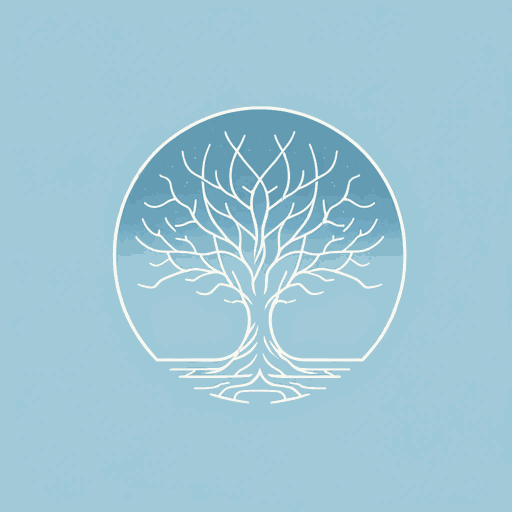
Anansi Boys
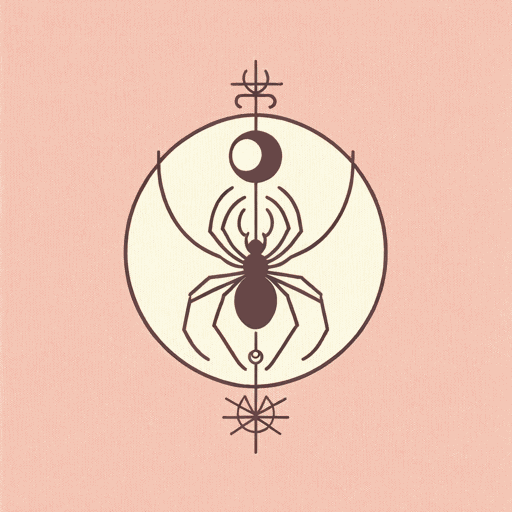
Fortunately, the Milk

How to Talk to Girls at Parties
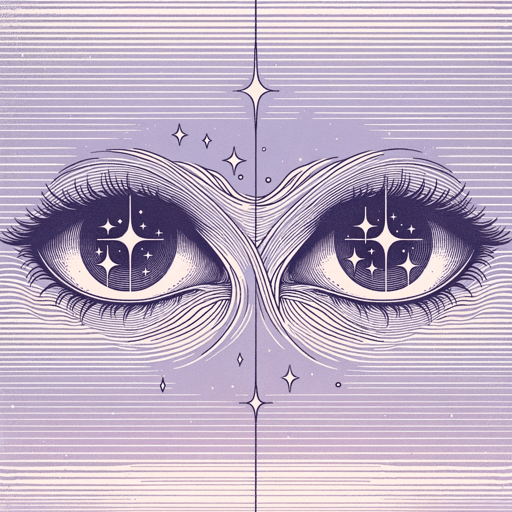
October in the Chair

The Graveyard Book

The Ocean at the End of the Lane
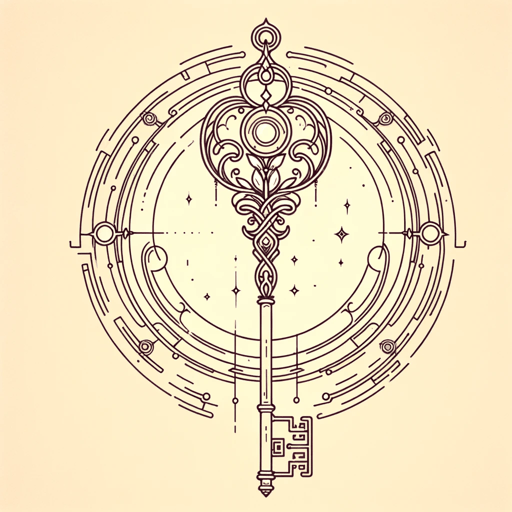
The Sandman Omnibus Vol. 1
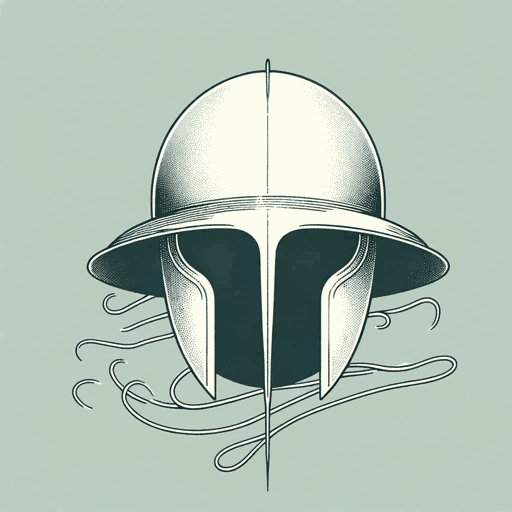
The Sleeper and the Spindle

Featured Collections
View Collection
share this!
June 20, 2024
This article has been reviewed according to Science X's editorial process and policies . Editors have highlighted the following attributes while ensuring the content's credibility:
fact-checked
peer-reviewed publication
trusted source
The ornate horns of ancient marvel Lokiceratops point to evolutionary insights
by Colorado State University
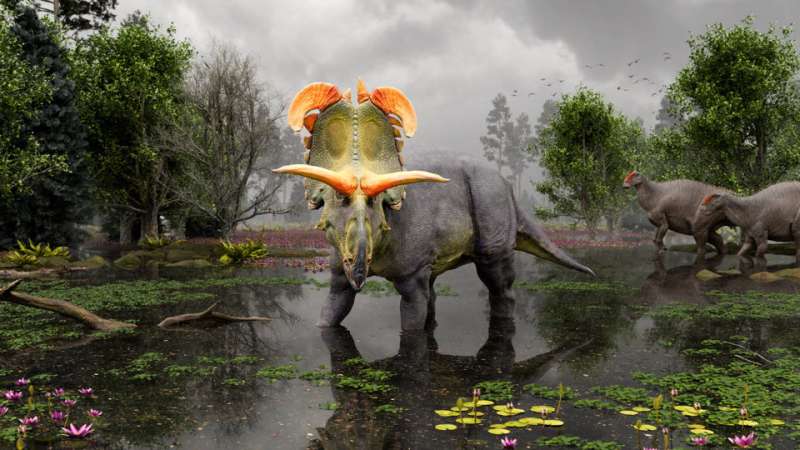
What do you get when you cross Norse mythology with a 78-million-year-old ancestor to the Triceratops? Answer: Lokiceratops rangiformis, a plant-eating dinosaur with a very fancy set of horns.
The new dinosaur was identified and named by Colorado State University affiliate faculty member Joseph Sertich and University of Utah Professor Mark Loewen. The dinosaur's name, announced today in the journal PeerJ , translates roughly to "Loki's horned face that looks like a caribou."
Loewen and Sertich, co-lead authors of the study, dubbed the new species Lokiceratops (lo-Kee-sare-a-tops) rangiformis (ran-ɡi-FOHR-mees) because of the unusual, curving blade-like horns on the back of its frill—the shield of bone at the back of the skull—and the asymmetrical horns at the peak of the frill, reminiscent of caribou antlers.
"The dinosaur now has a permanent home in Denmark, so we went with a Norse god, and in the end, doesn't it just really look like Loki with the curving blades?" Loewen said, referring to the trickster god's weapon of choice.
Loewen, a paleontologist at the Natural History Museum of Utah, and Sertich, a paleontologist with the Smithsonian Tropical Research Institute, are both scientific consultants for the Museum of Evolution in Denmark, Lokiceratops's new home.
"It's one of those stories with a happy ending, where it didn't go to somebody's mansion," Sertich said. "It ended up in a museum, where it will be preserved forever so people can study it and enjoy visiting it."
New dinosaur discovery
Lokiceratops was discovered in 2019 in the badlands of northern Montana, two miles (3.2 kilometers) south of the U.S.-Canada border. Sertich and Loewen helped reconstruct the dinosaur from fragments the size of dinner plates and smaller. Once they had pieced the skull together, they realized the specimen was a new type of dinosaur.
Estimated to be 22 feet (6.7 meters) long and weigh 11,000 pounds (5 metric tons), Lokiceratops is the largest dinosaur from the group of horned dinosaurs called centrosaurines ever found in North America. It has the largest frill horns ever seen on a horned dinosaur and lacks the nose horn that is characteristic among its kin.
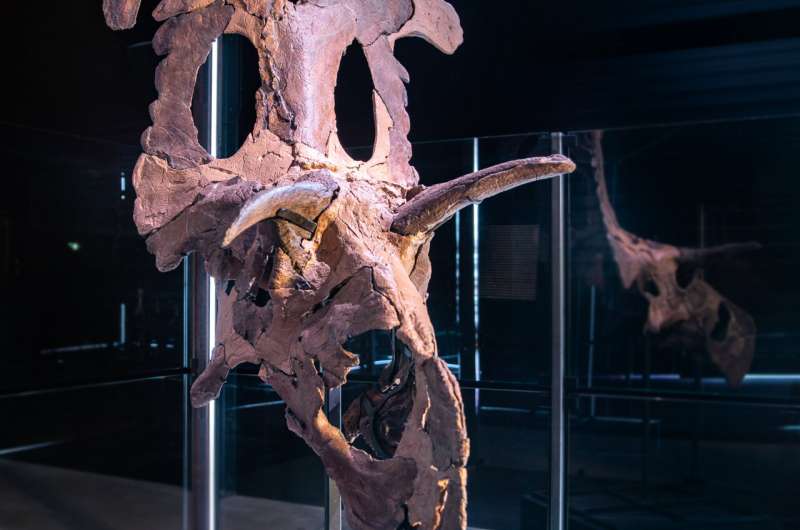
"This new dinosaur pushes the envelope on bizarre ceratopsian headgear, sporting the largest frill horns ever seen in a ceratopsian," Sertich said in a press release announcing the dinosaur's unveiling at the Natural History Museum of Utah, where a replica is displayed. "These skull ornaments are one of the keys to unlocking horned dinosaur diversity and demonstrate that evolutionary selection for showy displays contributed to the dizzying richness of Cretaceous ecosystems."
Sertich likened dinosaur horns to feathers on birds. Birds use feather colors and patterns to differentiate their own species among other, similar species of birds.
"We think that the horns on these dinosaurs were analogous to what birds are doing with displays," Sertich said. "They're using them either for mate selection or species recognition."
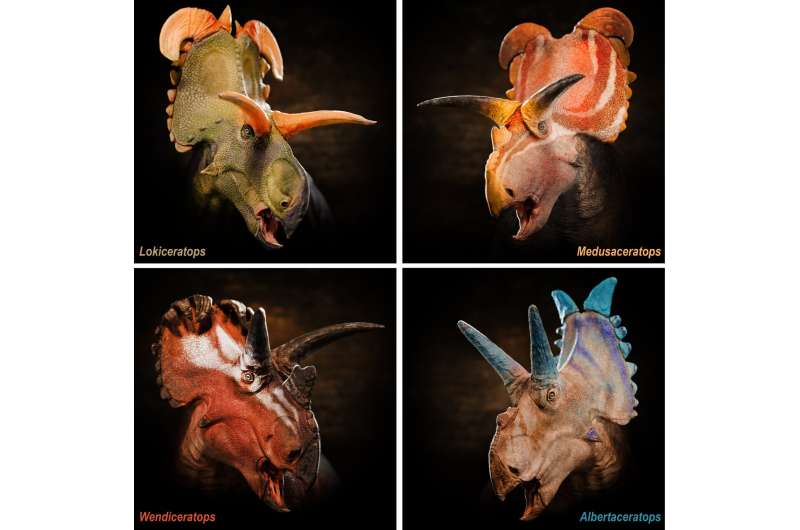
What Loki's horns tell us about dinosaurs
Lokiceratops was excavated from the same rock layer as four other dinosaur species, indicating that five different dinosaurs lived side by side 78 million years ago in the swamps and coastal plains along the eastern shore of Laramidia, the western landmass of North America created when a seaway divided the continent. Three of these species were closely related but not found outside the region.
"It's unheard-of diversity to find five living together, similar to what you would see on the plains of East Africa today with different horned ungulates," Sertich said.
Unlike the broad range of large wild mammals that roam the U.S. West today, such as elk, these ancient animals were geographically limited, he added. Loki's discovery provides evidence that these species evolved rapidly within a small area, a process sometimes seen in birds.
By the time Triceratops came onto the scene 12 million years later, regional differences had been homogenized into just two species of horned dinosaurs from Canada to Mexico—possibly in response to a more homogenous climate, Sertich said.
The study shows that dinosaur diversity has been underestimated and presents the most complete family tree of horned dinosaurs to date.
"Lokiceratops helps us understand that we are only scratching the surface when it comes to the diversity and relationships within the family tree of horned dinosaurs," Loewen said.
Journal information: PeerJ
Provided by Colorado State University
Explore further
Feedback to editors

New insights into how cell shape influences protein transport rates
11 hours ago

An alternative way to manipulate quantum states

New photonic chip spawns nested topological frequency comb

Scientists discover surprising link between ancient biology and restricted human hair growth
12 hours ago

Spectroscopic technique that singles out water molecules lying on the surface reveals how they relax after being excited

Insecticides contribute to drop in butterfly species across US MidWest: Study
13 hours ago

Wild chimpanzees seek out medicinal plants to treat illness and injuries, study finds

Study finds plants store carbon for shorter periods than thought

Behavioral and computational study shows that social preferences can be inferred from decision speed alone

Family conditions may have more of an impact on upward social mobility than gender inequality
Relevant physicsforums posts, periodical cicada life cycle.
3 hours ago
Is meat broth really nutritious?
Jun 18, 2024
A DNA Animation
Jun 15, 2024
Innovative ideas and technologies to help folks with disabilities
Jun 14, 2024
How do fetuses breathe in the womb?
Dna-maternity test - could you see other relationship than mother.
Jun 11, 2024
More from Biology and Medical
Related Stories

Research shows that five three-horned dinosaurs lived, and died, together
Mar 26, 2024

Biden restores protections to Utah land where dinosaurs once roamed
Oct 9, 2021

New 'lost relative' of Triceratops found in New Mexico
Oct 5, 2021

Abelisauroid, a dinosaur with very tiny arms, identified in Argentina
May 24, 2024

Horned dinosaur Crittendenceratops discovered in Arizona
Dec 14, 2018

New skull of tube-crested dinosaur reveals evolution of bizarre crest
Jan 25, 2021
Recommended for you

New, small, ancient crocodile-like reptile described in Brazil
16 hours ago

How glacier algae are challenging the way we think about evolution
Jun 19, 2024

Interaction with insects accelerates plant evolution, research finds

250-million-year-old fossil seen anew with modern technology

Unexpected diversity of light-sensing proteins goes beyond vision in frogs

New analysis determines ancient polar sea reptile fossil is oldest ever found in Southern Hemisphere
Jun 17, 2024
Let us know if there is a problem with our content
Use this form if you have come across a typo, inaccuracy or would like to send an edit request for the content on this page. For general inquiries, please use our contact form . For general feedback, use the public comments section below (please adhere to guidelines ).
Please select the most appropriate category to facilitate processing of your request
Thank you for taking time to provide your feedback to the editors.
Your feedback is important to us. However, we do not guarantee individual replies due to the high volume of messages.
E-mail the story
Your email address is used only to let the recipient know who sent the email. Neither your address nor the recipient's address will be used for any other purpose. The information you enter will appear in your e-mail message and is not retained by Phys.org in any form.
Newsletter sign up
Get weekly and/or daily updates delivered to your inbox. You can unsubscribe at any time and we'll never share your details to third parties.
More information Privacy policy
Donate and enjoy an ad-free experience
We keep our content available to everyone. Consider supporting Science X's mission by getting a premium account.
E-mail newsletter

IMAGES
VIDEO
COMMENTS
Thanks for exploring this SuperSummary Study Guide of "Norse Mythology" by Neil Gaiman. A modern alternative to SparkNotes and CliffsNotes, SuperSummary offers high-quality Study Guides with detailed chapter summaries and analysis of major themes, characters, and more. For select classroom titles, we also provide Teaching Guides with discussion and quiz questions to prompt student engagement.
Here we are again looking to ancient mythology to inspire stories. If you are into this sort of thing, I have two other posts you might like about Greek Myths, Irish Myths, and Bulgarian Folklore. This one was fun to do. Norse mythology is popular right now thanks to Neil Gaiman's Norse Mythology and the new God of War game. For a more thorough reading of the stories I encourage you to check ...
Norse mythology is fascinating! Its similarities to other cultures and its links to the Viking world make it a great topic for the study of history and past cultures. These essay topics will give ...
Essays and criticism on Norse Mythology - Critical Essays. ... You'll also get access to more than 30,000 additional guides and more than 350,000 Homework Help questions answered by our experts.
Thanks for exploring this SuperSummary Study Guide of "Norse Mythology" by Neil Gaiman. A modern alternative to SparkNotes and CliffsNotes, SuperSummary offers high-quality Study Guides that feature detailed chapter summaries and analysis of major themes, characters, quotes, and essay topics.
Essays and criticism on Norse Mythology - History And Mythological Tradition ... You'll also get access to more than 30,000 additional guides and more than 350,000 Homework Help questions answered ...
Bringing Norse Myths To Life: Writing An Engaging Essay. 26. Apr. Only a few particular aspects of human mythology are comparable to the complexity and intrigue of Norse myths. Ranging from the thunderous clashes of the gods to the inspiring narratives of their great deeds, the sagas of Norse mythology have captivated the audience for many years.
Start free trial Sign In Start an essay Ask a question Norse Mythology. Start Free Trial ... Norse Mythology Questions and Answers. How is the mythological Kraken described in Norse Mythology?
Essay Topic 5. Define irony and cite examples of irony in the stories... (read more Essay Topics) This section contains 707 words. (approx. 3 pages at 300 words per page) View a FREE sample. More summaries and resources for teaching or studying Norse Mythology (Stories). View all Lesson Plans available from BookRags.
20. Imagine yourself a thousand years in the future. Write a myth or legend of our era as it might evolve. Take the Kennedy dynasty as an example and treat it in a mythical vein. Previous Quiz. Next Cite this Literature Note. 1. Discuss the differences between pure myth, heroic saga, the folk tale, the romance, and the symbolic tale.
Thanks for exploring this SuperSummary Study Guide of "Norse Mythology" by Neil Gaiman. A modern alternative to SparkNotes and CliffsNotes, SuperSummary offers high-quality Study Guides with detailed chapter summaries and analysis of major themes, characters, and more. For select classroom titles, we also provide Teaching Guides with discussion and quiz questions to prompt student engagement.
About Norse Mythology. Introduction. Teutonic religion extended through Germany, Scandinavia, and England in the Dark Ages, and as Christianity supplanted it the old gods and rites were destroyed and forgotten. Much of our knowledge of this religion stems from The Elder Edda and The Younger Edda, which were compiled in Iceland during the Middle ...
Question: According to Norse mythology, who is the son of the chief god Odin and his wife, Frigg? Answer: Balder is the son of the chief god Odin and his wife, Frigg. Question: Which poetic text, dating from between 800 and 1100 CE, provides the first written record of the legend of the theft of Thor's hammer?
Stuck on your essay? Browse essays about Norse Mythology and find inspiration. Learn by example and become a better writer with Kibin's suite of essay help services.
Essays and criticism on Norse Mythology - Norse Mythology And Other Traditions ... You'll also get access to more than 30,000 additional guides and more than 350,000 Homework Help questions ...
The Æsir tribe contained some of the best-known Norse Gods and goddesses such as Odin, Thor, Frigg, Tyr, Loki, Baldur, Heimdall, Idun, and Bragi1. These Gods represented kingship, order, craft, etc. The Vanir were Gods and Goddesses such as Freya, Freyr, Njord and the Germanic Goddess Nerthus. Read More.
Thanks for exploring this SuperSummary Study Guide of "Norse Mythology" by Neil Gaiman. A modern alternative to SparkNotes and CliffsNotes, SuperSummary offers high-quality Study Guides with detailed chapter summaries and analysis of major themes, characters, and more. For select classroom titles, we also provide Teaching Guides with discussion and quiz questions to prompt student engagement.
Norse mythology was one aspect of Germanic indigenous religion. In this research paper I will tell were Norse mythology originated from, the creation story, how the sun and moon came to be, and how humans were created. I will also include deities such as, Odin, Thor, Freya, and Loki, and creatures.
Looking at the gods, it is easy to tell what the civilization most valued. I am going to look at the Greek and the Norse gods to compare what was most important to their societies. Both cultures had a king of the gods. In Greek mythology there is no god who is more powerful than Zeus. He is the youngest son of Cronus and Rhea, ruler of the Titans.
Norse mythology, a collection of myths and legends from ancient Scandinavia, has captivated the minds of people all over the world. Among its many fascinating themes, one of the most prominent is the role of heroes.... As of June of 2014, seven elements are named for mythological figures: Niobium, Promethium, Thorium, Tantalum, Mercury, Titanium and Vanadium.
Norse Mythology (60 Questions) Whether you're new to the myths or have been learning them your whole life, the Norse tales are both comedic and dark, thrilling and calm, romantic and disgusting, moving and utterly absurd. There's something for everyone. In this quiz you'll answer 60 questions on the Norse realms, gods and stories.
Thanks for exploring this SuperSummary Study Guide of "Norse Mythology" by Neil Gaiman. A modern alternative to SparkNotes and CliffsNotes, SuperSummary offers high-quality Study Guides with detailed chapter summaries and analysis of major themes, characters, and more. For select classroom titles, we also provide Teaching Guides with discussion and quiz questions to prompt student engagement.
Summary. Last Updated September 5, 2023. Norse Mythology, a 2017 novel written by Neil Gaiman, was inspired by Gaiman's own interests in Norse Mythology. In this novel, Gairman spins old-fashioned ...
Abstract. This study examines the myth of the death of the Norse god Baldr in a comparative framework. Scholars working in the fields of comparative mythology and religion have long argued that a myth concerning the sacrificial killing of the first man is represented in the ancient and medieval literatures of several languages in the Indo-European family.
What do you get when you cross Norse mythology with a 78-million-year-old ancestor to the Triceratops? Answer: Lokiceratops rangiformis, a plant-eating dinosaur with a very fancy set of horns. Topics